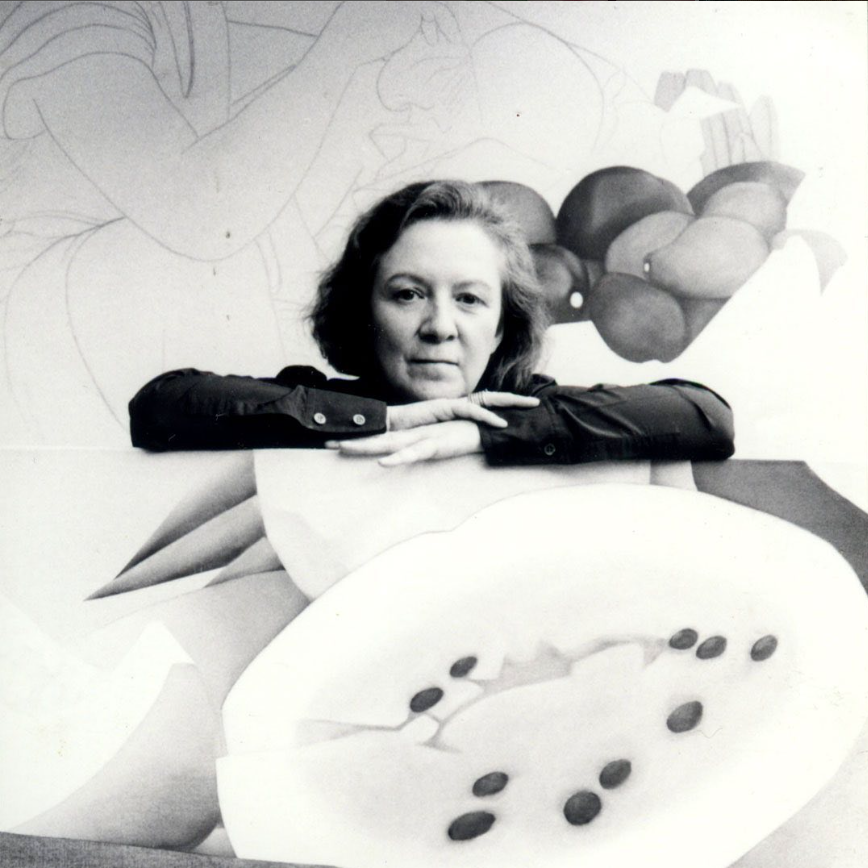

Ana Mercedes Hoyos
Colombia
(1942 – 2014)
Ana Mercedes Hoyos Mejía was a prominent Colombian artist, renowned for her skill in both painting and sculpture. Her innovative and committed work made her a key figure in the development of Latin American art in the 20th and 21st centuries.
She was born on September 29, 1942, in Bogotá, Colombia. Her father, Manuel José Hoyos Toro, was an architectural engineer who encouraged her interest in art history. Ana Mercedes completed her primary and secondary education at Colegio Marymount in Bogotá, where she also took private painting classes with Luciana Jaramillo. In 1960, she entered the Universidad de los Andes with professors such as Juan Antonio Roda, Marta Traba, and Armando Villegas. During her university education, Hoyos was influenced by the pop art movement and abstract art, trends that marked her early works. However, as she progressed in her career, her style became uniquely defined, incorporating elements of Colombian culture and a vibrant color palette. In addition to her formal education, she traveled to Europe, Mexico, and the United States to learn about art in other cultures.
In 1967, she married Jacques Mosseri Hané, an architect, and they spent a month in New York City exploring pop art exhibitions before returning to Bogotá. Their daughter Ana was born in 1969.
Ana Mercedes Hoyos's artistic career was characterized by constant search and innovation. She began exhibiting in 1966 with works that showed an interest in the connection between landscape and architecture, especially in the dialogue between interior and exterior spaces. Throughout her career, she experimented with various styles and techniques, from painting and printmaking to sculpture and installations. Her work has been divided into different stages, each with its own distinctive characteristics:
Pop Art Stage (1960-1970): In this initial stage, Hoyos was influenced by the American pop art movement, using images from popular and urban culture in her works.
Abstract Stage (1970-1980): During this period, Hoyos delved into geometric abstraction, exploring shapes and colors with great creative freedom.
Stage of Doors and Windows (1980-1990): Hoyos began to incorporate architectural elements into her works, such as doors and windows, which became a distinctive hallmark of her style.
Palenqueras Stage (1990-2000): In the 1990s, Hoyos became interested in Afro-Colombian culture, especially the Palenquera women of Cartagena. This fascination led her to create a series of works portraying these women with great color and symbolism.
Final Stage (2000-2014): In her later years, Hoyos continued to explore new themes and techniques, including sculpture and installations. Her work was characterized by a reflection on memory, identity, and the human condition.
Ana Mercedes Hoyos was one of the most important Colombian artists of the 20th and 21st centuries. Her work has been recognized nationally and internationally, and she has received numerous awards and distinctions, including the first prize at the XXVII National Artists Salon of Colombia in 1978.
Hoyos passed away in Bogotá on September 5, 2014. Her work is part of the collections of important museums in Colombia and abroad. She was a pioneering artist who opened new paths for Colombian art. Her legacy continues to inspire generations of artists and art lovers around the world.

